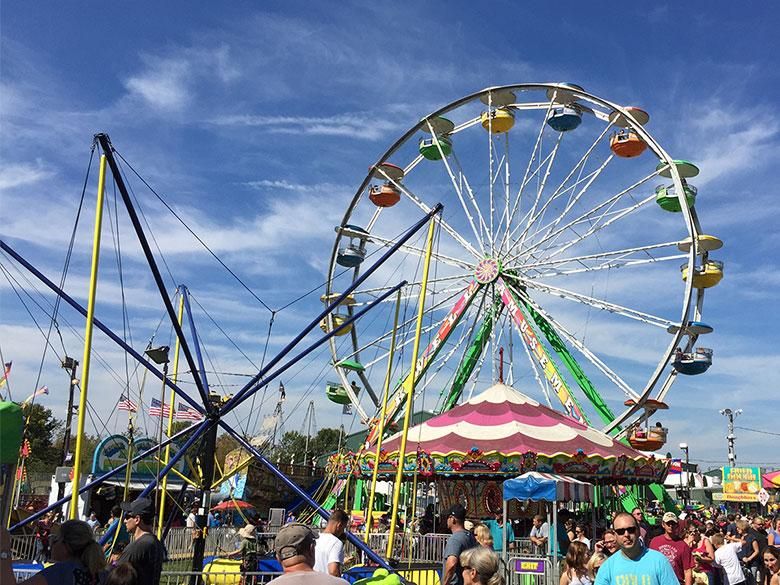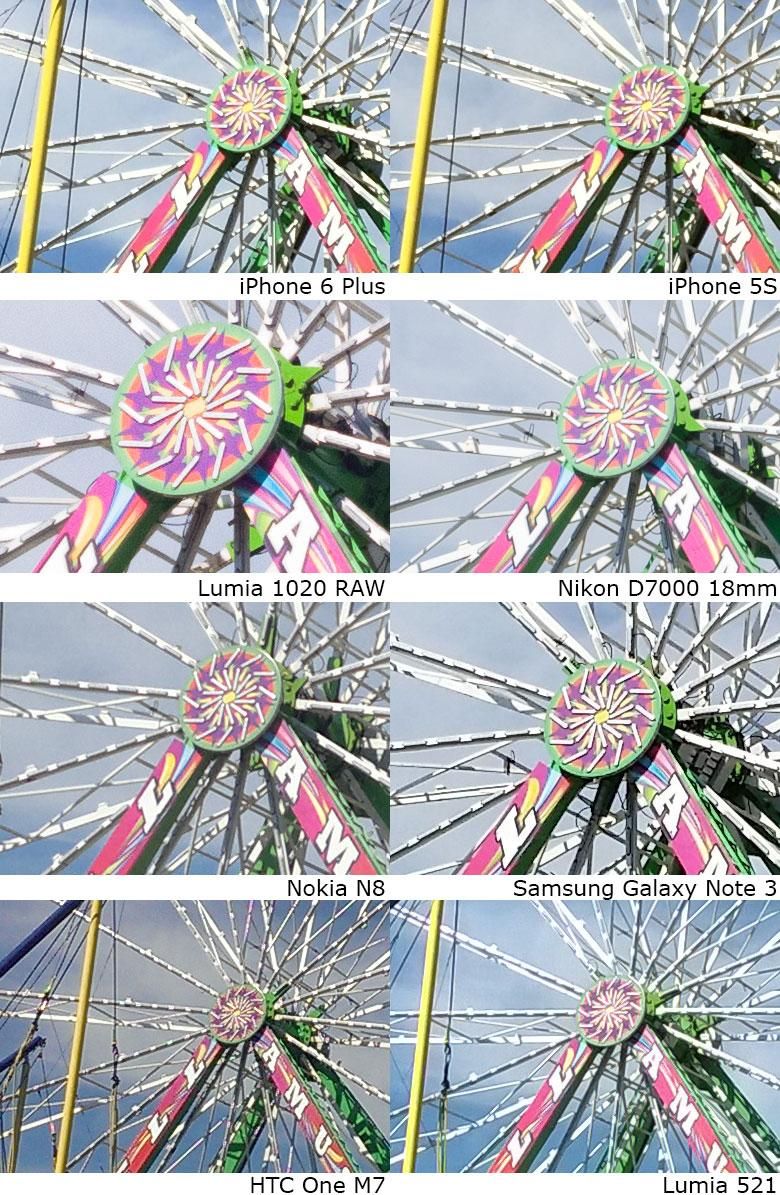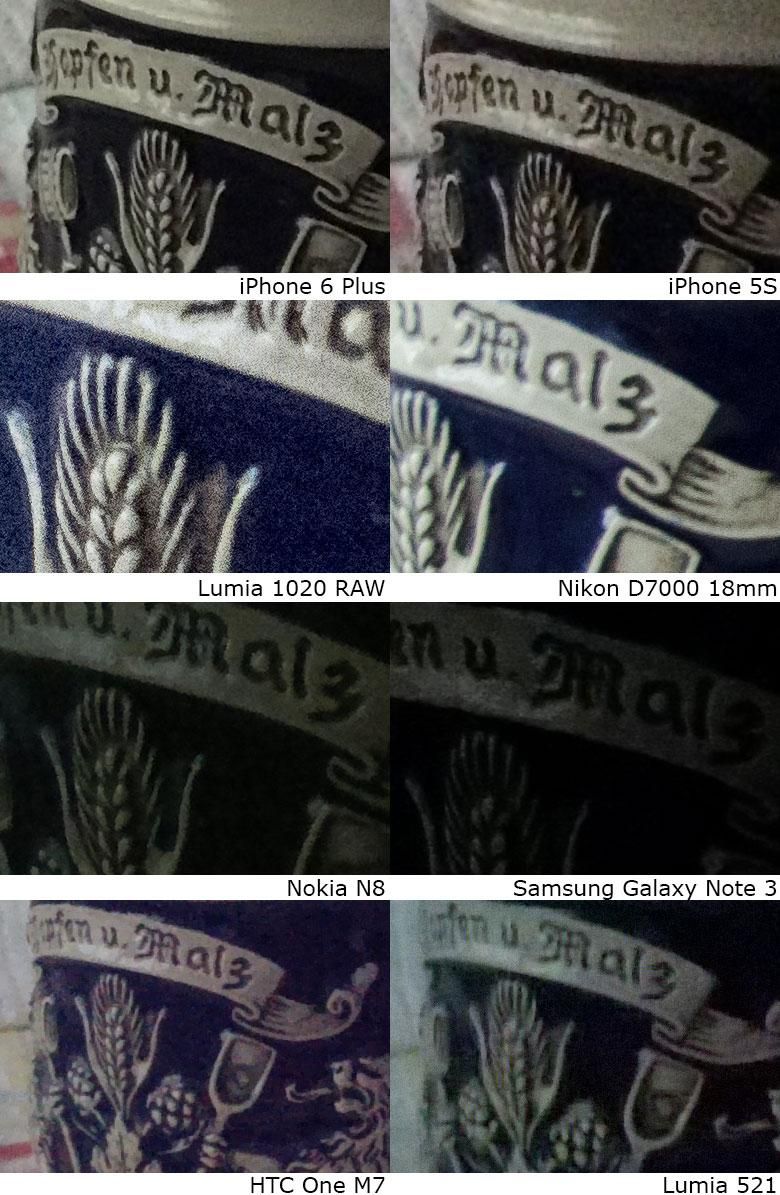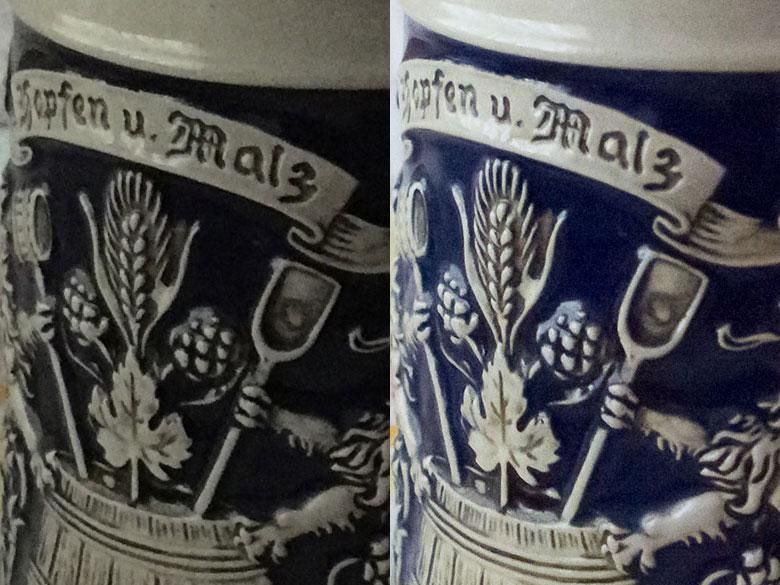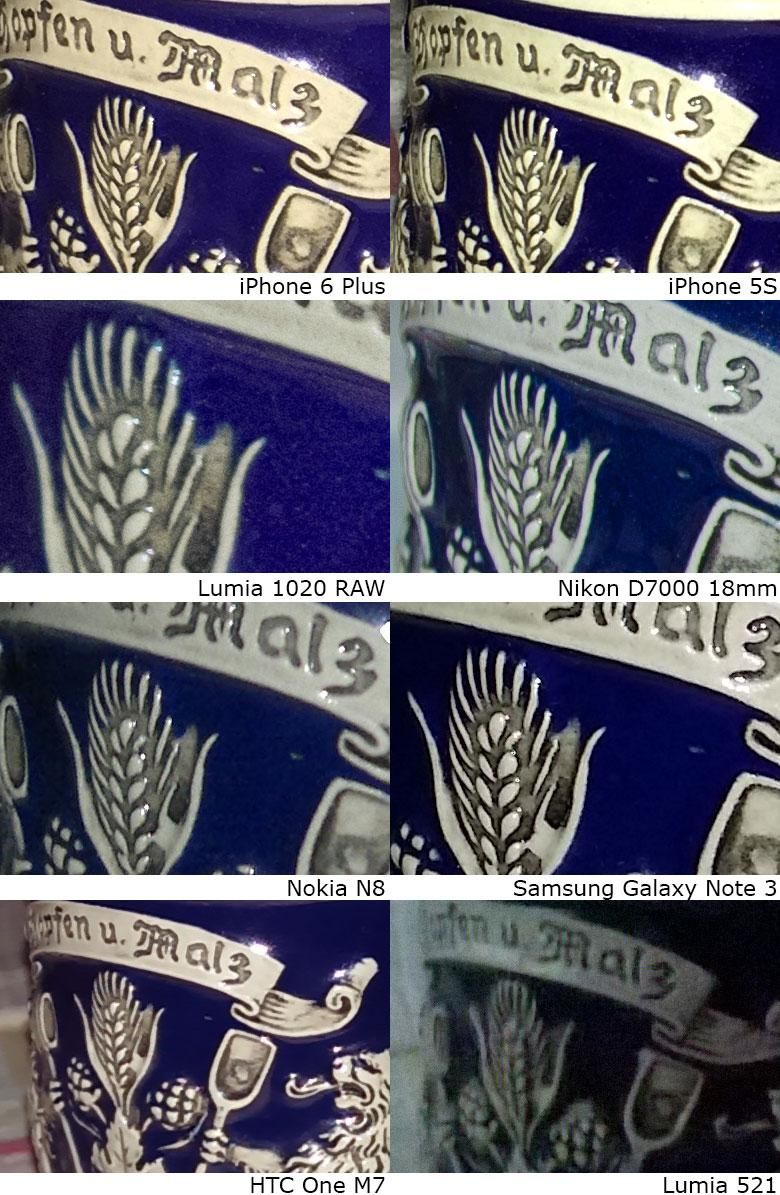Since the new iPhone 6 came out, everybody’s talking about all the new features and especially the new 8 megapixel camera. Many are giving it some great praise, but as Micheal said in the “Here’s what the iPhone 6 camera can do” piece, it’s a good camera, but it ain’t no Nokia. In this piece we’re going to take a close look at how the picture quality of the iPhone 6 plus really compares to a few of the other smartphones out there, as well as a midrange DSLR just for fun.
Before you go reading through all of my commentary in this camera phone shootout, I’d like to invite you to look at the pictures first and form your own opinion. Don’t forget to check out the full resolution samples at the bottom of the page. Then scroll back and do your reading.
In the grids below, first you’ll see the new iPhone 6 Plus with its updated 8 megapixel sensor and optical image stabilization followed by the older iPhone 5S and its 8 megapixel sensor without optical image stabilization both have a two-tone LED flash. Next we’ve got the Nokia Lumia 1020 with its 41 megapixel sensor, Carl Zeiss lens, optical image stabilization, LED focus assist, Xenon Flash and it’s shooting a RAW DNG format for increased flexibility. Then we’ve got a Nikon D7000 with an 18-200mm VR2 (optical image stabilization) lens, on-board flash, 16.2 megapixel sensor and RAW NEF file format. Next up is the Nokia N8; a flagship Nokia camera phone from 2010 with a large-physical-size 12 megapixel sensor, xenon flash and LED focus assist. Then there’s the Samsung Galaxy Note 3 with a 13 megapixel sensor and LED flash. Finally, we’ve got two smartphones with really low megapixel counts; the HTC One M7 and the Nokia Lumia 521. The HTC One M7 has a 4 megapixel sensor with an LED flash and HTC’s “ultrapixel” technology that’s supposed to improve low-light image quality. Lastly is the Nokia Lumia 521; a budget smartphone that can be had for between $19-$99 off contract. It has no flash at all and a 5 megapixel sensor.
Daylight photos
The following graphic combines 100% pixel for pixel cropped photos of 7 smartphone cameras and one medium range DSLR. The scene was a very bright sunny day at a fair which should give us optimal conditions for the digital cameras.
The iPhone 6 Plus and iPhone 5S are just about exactly the same. Both seem to have a little extra saturation and contrast applied and you can see a subtle bit of artificial sharpening around the edges of the cables. They’re also a bit yellow which is visible in the arms of the Ferris wheel that are supposed to be white. Some iPhone photographers contend that it looks better like that, and that’s certainly a matter of opinion, but others may prefer more natural colors.
As you can see, the Lumia 1020 is by far the most detailed of the bunch. It doesn’t have any extra sharpening applied, but you can still make out every little wire running to the lights in the Ferris wheel’s arms as well as the individual bolts. The Nikon D7000 midrange DSLR is very similar to the Lumia 1020 in image quality except that its 16 megapixel sensor doesn’t capture as much detail. Of course, one big advantage of the Lumia 1020 and Nikon D7000 is the RAW format which we can use to make adjustments to the white balance and post processing where as all of the other cameras tested are essentially stuck the way they are as JPGs.
The Nokia N8 still performs pretty well, but it’s certainly showing its age. The colors are great, but the exposure is tuned to the low end in order to maintain more details in the highlights. Again, another reason to shoot RAW instead of JPG. The Samsung Galaxy Note 3 looks like it’s gone through a ton of post processing and artificial sharpening, but at least the whites are still white.
HTC’s 4 megapixel ultrapixel camera in the One m7 is kind of a mess even in optimal daylight conditions. There’s very little detail, the whites are a bit yellow, and I’m even seeing chromatic aberrations with purple fringing. Some of the cables in the Ferris wheel seem to have gaps in them. Lastly, the super-cheap Lumia 521 actually does pretty well. Its colors look natural and the image is well exposed, but we do see a bit of post-processing sharpening and of course there’s not as much detail as some of the other cameras.
Lowlight, no flash photos
The following graphic combines 100% pixel for pixel cropped photos of 7 smartphone cameras and one medium range DSLR just as before however this scene was shot in a dark room with the lights off and shades drawn to test some low-light capabilities.
This is where the smartphone cameras show their true colors. A dark room is the most difficult place to generate good photos and this is where we see some real improvements for the iPhone 6 Plus over the iPhone 5S. While the iPhone 6 Plus still has plenty of noise, it’s much less than the iPhone 5S which looks like a splotchy mess. Unfortunately, when it comes to color, the iPhone 6 Plus is still way off.
The Lumia 1020 DNG file shows us that this beer stein is actually blue where as both iPhones show it as black with muddy yellow-grey trim. The Nikon D7000 also gives us a look at the real color of this object, but the Lumia 1020 has a lot of noise in the image. This is certainly to be expected in such low light, but since we shot in RAW format, the noise is actually pleasant. It’s a fine-grain and more uniform, a lot like real film photographers used to use. I tried to Photoshop the iPhone 6 Plus’s photo to bring out the blue in the beer stein photo, but since the iPhone saves as JPG there really isn’t any better color information there at all.
The Nokia N8 and Samsung Galaxy Note 3 are pretty horrible in this low-light scenario. The Note 3 has big chunks of noise and barely any detail though it’s possible to make things a bit better by tweaking the settings before you take the shot. The HTC One m7 is expectedly not very good. Its color is even more incorrect than the iPhones and there’s very little detail. The Lumia 521 scores some points for getting the grey areas of the beer stein correct in terms of color, but the blue area has gone to black and things have gotten a bit blurry.
If you feel like the Lumia 1020’s RAW file has too much noise, we can run a little NR in ACR and downsample it to 8 megapixels. Here’s how that looks next to the iPhone 6 Plus’s photo. (Left: iPhone 6 Plus, Right: Lumia 1020 8Mp)
Lowlight with flash photos
Again, the following graphic combines 100% pixel for pixel cropped photos of 7 smartphone cameras and one medium range DSLR, but this set turns on the camera’s flash in the same low-light scene as the previous set. Note that since the Lumia 521 does not have a flash, the same no-flash sample was used.
Both the iPhone 6 Plus and the iPhone 5S use what Apple calls a “True Tone Flash”. It probably should have been called “False Tone Flash” because it generates completely inaccurate unnatural colors in the photos. Both the iPhone 6 Plus and iPhone 5S with flash on cause very yellow images, with the iPhone 5S leaning more towards green. We’re zoomed in on a part of the image that should be much closer to a neutral grey here, and both iPhones are completely off.
Again, the Lumia 1020 boasts far superior image quality, more detail, and better color reproduction. This sample is using the “as shot” white balance, which seems very slightly off, but since we shot RAW, that’s an easy fix. The Nikon D7000 is getting accurate color as well, though notably less detail due to the 16 megapixel sensor. Its on-camera flash is by far the best in this comparison as it fills the dark background much better than the others. Popping a Nikon Speedlight on the hot shoe gives far superior results to that, too.
Like the Lumia 1020, the Nokia N8’s xenon flash works great for lighting a dark area though it doesn’t fill the background quite as much. This is probably because the Lumia 1020 can keep a longer shutter open using OIS to stabilize the image while the light from the flash reflects off of more surfaces. The Galaxy Note 3’s flash does pretty good in the foreground, but falls off significantly with a bit more distance. Unfortunately a significant amount of artificial sharpening is here and that doesn’t look so good.
The HTC One m7 is probably the worst of the bunch again with its color problems and blotchy noise, but at least it has a flash on-board unlike the Nokia Lumia 521.
Full Resolution Samples
iPhone 6 Plus:
iPhone 5S:
Lumia 1020 (RAW DNG saved as JPG with ACR auto-correction applied):
Nikon D7000 (RAW NEF saved as JPG with ACR auto-correction applied):
Nokia N8:
Samsung Galaxy Note 3:
HTC One m7:
Nokia Lumia 521:
Special thanks to Ray & Amber Doan for contributing the iPhone 6 Plus, iPhone 5S, and Samsung Galaxy Note 3 photos to this piece.

